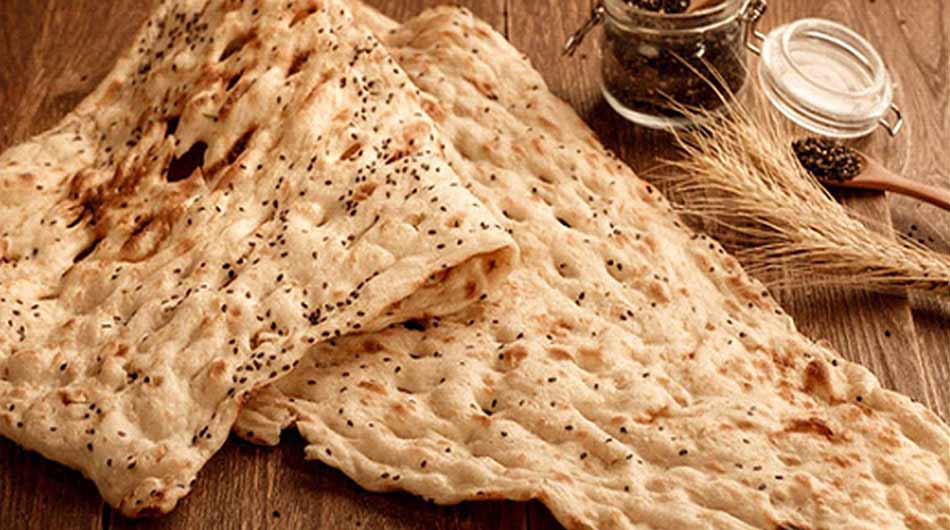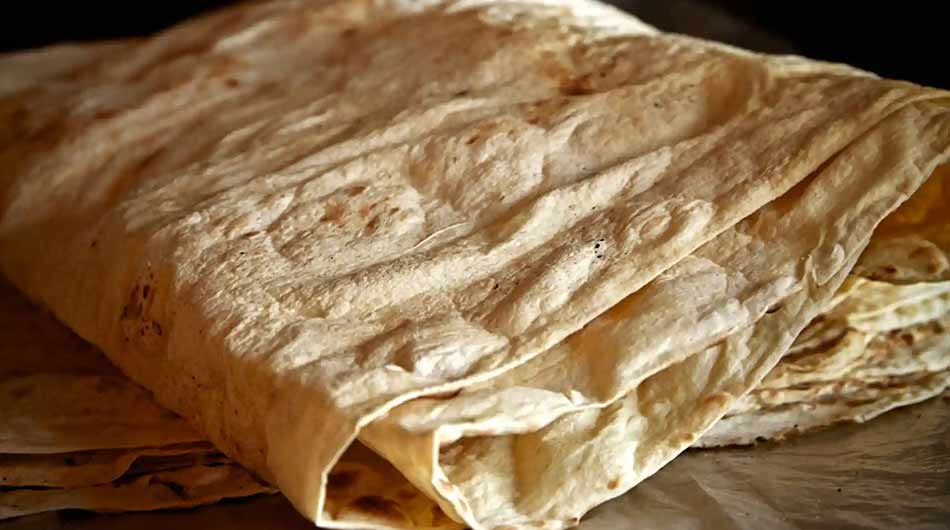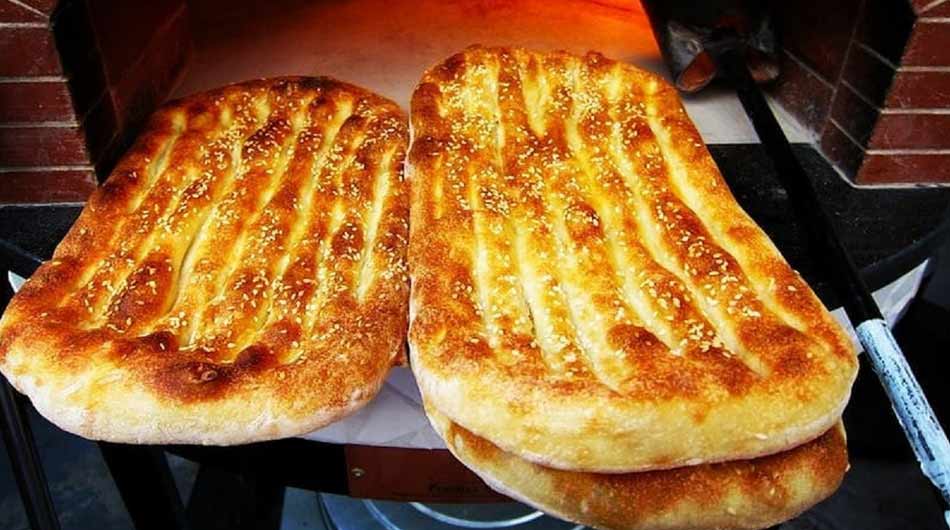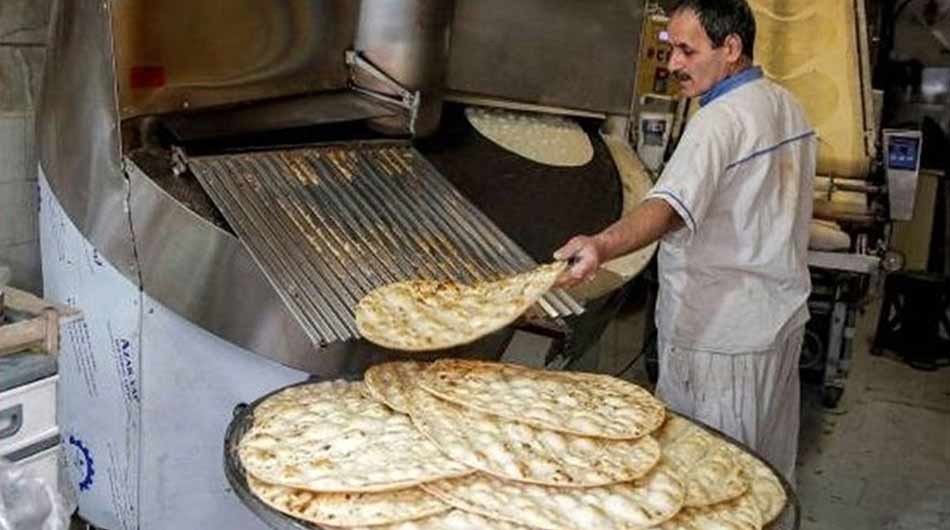Introduction to Iranian Breads
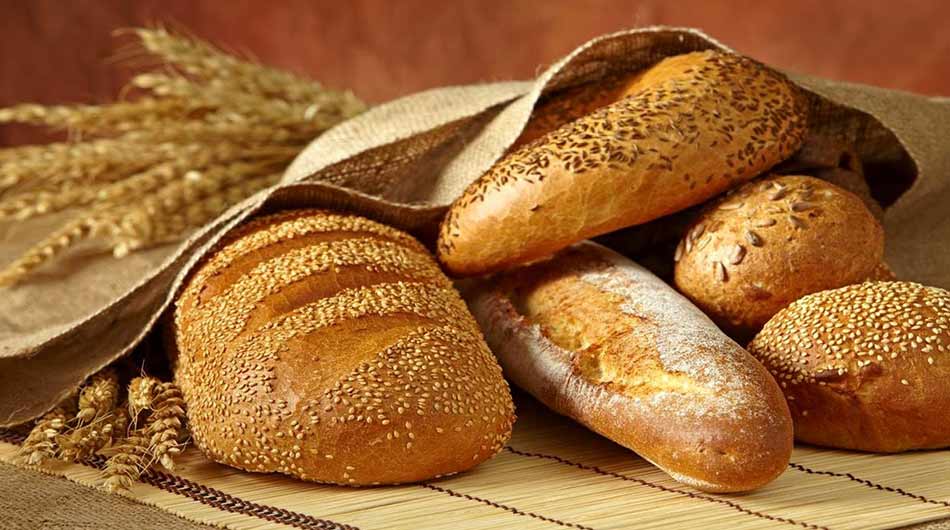
The Cultural Significance of Bread in Iran
Bread, or “nan” in Persian, is a cornerstone of Iranian cuisine. It is served at almost every meal and is often used as a utensil to scoop up food. The importance of bread is reflected in Persian literature and proverbs, where it symbolizes sustenance and life. Offering bread to guests is a gesture of hospitality, and sharing bread signifies friendship and trust.
Types of Iranian Breads
Iranian breads come in a variety of shapes, sizes, and textures, each with its own unique preparation method and regional variations. Here are some of the most popular types:
Sangak
Description: Sangak is a traditional Iranian flatbread made from whole wheat flour. It is characterized by its uneven surface and crisp edges.
Preparation: This bread is baked on a bed of small river stones (sang means stone in Persian), which gives it a distinctive texture. The dough is spread over the hot stones, resulting in a rustic, dimpled appearance.
Cultural Note: Sangak is often enjoyed with cheese, fresh herbs, and walnuts for breakfast, or used to wrap kebabs.
Lavash
Description: Lavash is a soft, thin flatbread that is widely consumed in Iran and neighboring countries.
Preparation: The dough is rolled out thin and baked in a tandoor or on a saj (a convex metal griddle). It has a flexible texture, making it perfect for wrapping and rolling.
Cultural Note: Lavash is a versatile bread that can be used for sandwiches, as a side with stews, or to make traditional dishes like lavashak (fruit leather).
Barbari
Description: Barbari is a thick, oval-shaped bread with a crisp crust and a soft, airy interior. It is slightly thicker than other Iranian flatbreads.
Preparation: The dough is leavened with yeast and often brushed with a mixture of flour and water before baking to create its signature crust. Sesame seeds or nigella seeds are sometimes sprinkled on top.
Cultural Note: Barbari is a favorite for breakfast, typically served with feta cheese, jam, or butter.
Taftoon
Description: Taftoon is a round, soft flatbread made from white or whole wheat flour. It has a slightly chewy texture and is often flavored with saffron or milk.
Preparation: The dough is allowed to rise before being baked in a tandoor or on a hot surface. It is often pricked with a fork to prevent it from puffing up too much.
Cultural Note: Taftoon is commonly served with stews, kebabs, or used as a wrap for various fillings.
Preparation and Baking Techniques
The preparation of Iranian bread is an art that has been perfected over generations. Traditional methods involve the use of natural ingredients and manual techniques that ensure each loaf has a unique flavor and texture. The following are some key steps in the bread-making process:
Ingredients: Iranian breads typically use simple ingredients like wheat flour, water, salt, and sometimes yeast. Some varieties include additional flavorings like saffron, sesame seeds, or herbs.
Kneading: The dough is kneaded thoroughly to develop gluten, which gives the bread its elasticity and chewy texture.
Rising: Depending on the type of bread, the dough may be left to rise for several hours to develop its flavor and texture.
Baking: Traditional Iranian breads are often baked in tandoors or on hot stones, which impart a unique taste and texture. The baking process requires skill to ensure the bread is cooked evenly and achieves the desired crispness or softness.
Bread in Everyday Life and Celebrations
In Iranian culture, bread is more than just food; it plays a central role in various traditions and celebrations. During Nowruz (Persian New Year), special breads like “nan-e berenji” (rice flour bread) are prepared to mark the occasion. Bread is also a vital component of communal meals, where it is shared among family and friends, reinforcing social bonds.
In rural areas, bread-making is often a communal activity, with families and neighbors coming together to prepare large batches in traditional ovens. This not only provides sustenance but also strengthens community ties.
Conclusion
Iranian breads are a testament to the country’s rich culinary heritage. Each type of bread, with its unique preparation method and cultural significance, tells a story of tradition, community, and hospitality. Whether enjoyed with a simple meal or as part of a festive celebration, Iranian bread continues to be a beloved staple that brings people together.
Tags:Adventure holidays, Barbari bread, Best time to travel to iran, best tour operator iran, Cultural sites of Iran, Culture Iran, Culture of Iranian People, Holiday in Iran, Iran, Iran Architectural, iran attractions, Iran cultural, iran destinations, Iran sightseeing tours, iran Solo trip, iran tour, Iran tour packages, iran tourist attractions, Iran travel agency, iran travel expenses, Iran Travel Guide, Iran Travel Tips, Iranian breads, Iranian Cuisine, Iranian culture, Lavash bread, must-visit Iran, persia tour, Sangak bread, Surfing In Iran, Taftoon bread, top tourist destinations, travel to iran, travelling to iran, trip to iran, Types of Iranian Breads, vacation packages, visit iran, درناگشت

